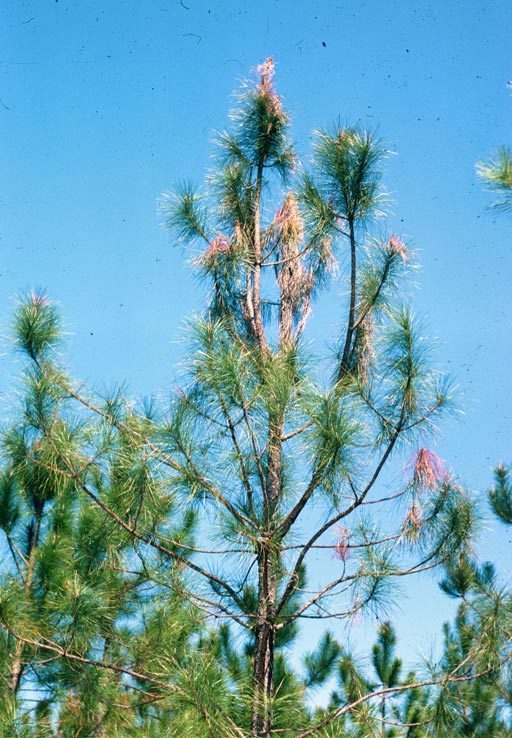
Pitch canker
Fusarium circinatum
What is Pitch canker (Fusarium circinatum)?
Pitch canker, caused by Fusarium circinatum, is a destructive disease affecting worldwide pine species. Insects, including engraver beetles, twig beetles, cone beetles, and deathwatch beetles, act as primary vectors for this fungal pathogen. It has been reported in various countries, including the US, Mexico, Chile, and European nations like France, Italy, Spain, and Portugal. Infected plants display resinous cankers, tip dieback, yellowing and browning needles, and resin-soaked bark. The disease thrives in mild coastal climates with fog, providing the required moisture for infection.
How does Pitch canker (Fusarium circinatum) occur?
Pitch canker reproduces through spores produced by the fungus Fusarium circinatum. The spores are dispersed through wind, rain, insects, and human activities such as movement of infected plant material. The disease can be introduced to new areas through infected nursery stock or contaminated equipment. Infection occurs when the spores land on susceptible pine trees and penetrate their tissues through wounds or natural openings. Once inside the tree, the fungus grows and reproduces, causing cankers and damaging the tree's vascular system, leading to wilting, dieback, and potential tree death.
Symptoms
1 - Plants Health
• Extensive death of pine species, resulting in ecological and economic losses. • Stunted growth and diminished vigor of infected trees, impacting forest productivity. • Lowered quality of timber from infected trees, affecting forestry industries.
2 - Impact on Soil
• Disrupted nutrient cycling processes due to dead trees. • Influences on soil microbial communities, affecting soil health and function.
3 - Impact on the Environment
• Disruption of ecological communities, affecting biodiversity and ecosystem functioning. • Changes in forest structure, impacting wildlife habitat and ecosystem dynamics. • Reduced carbon sequestration capacity due to tree mortality, potentially affecting climate regulation.
Solutions
1 - Prevention and Early Detection
• Use disease-free plant material from reputable sources. • Implement sanitation practices and quarantine measures. • Promote tree health through proper cultural practices. • Regularly monitor trees for symptoms and report suspected cases.
2 - Management Practices
• Prune and remove infected branches to limit disease spread. • Thin or remove heavily infected trees to reduce disease pressure. • Explore the use of biological control agents for suppression. • Consult with local agricultural or forestry authorities for specific recommendations. • Stay updated on the latest research and best practices for pitch canker management.
3 - Chemical control
• There are several fungicides available for managing pitch canker, including thiophanate-methyl, propiconazole, azoxystrobin, copper-based fungicides, and triadimefon. • It's important to note that the use of fungicides should be in accordance with local regulations and label instructions.
